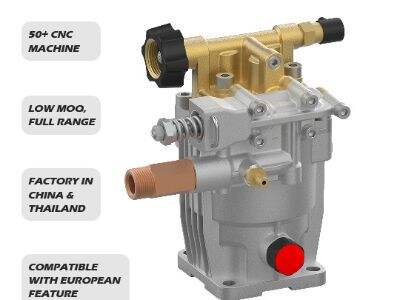There are many aspects to consider when needing to select the right engine driven axial pump. As Kuhong customer you expect to addressing all of your needs and that the pump would function properly. Here are some key points to keep in mind for the right choice.
Engine Driven Axial Pump: An Overview
An engine driven axial pump is a special machine for moving water or other types of liquids using a motor. They are extremely useful pumps that can be commonly found in farming, construction, and many other fields where water needs to be pumped quickly and efficiently card to a destination. This kind of pump will help you if you need to water a large field or move water to fill a swimming pool, for instance.
Key Features of Axial Pumps
There are a few factors to consider regarding the pump flow rate, pressure, and power when selecting an engine-driven axial pump.
Flow Rate — This indicates how much water the pump can move in a minute. Pumps that can move a lot of water quickly are extremely usefull, which is why this is considered a high flow rate.
Pressure: This is how strong the pump is when it is propelling the water. If you have to get water through pipes or up to a higher elevation, good pressure is critical.
Power: This refers to the amount of energy the motor provides to the engine pressure washer pump. If you have a lot of water to move, more power can help the pump to work more aptly.
Do also check the dimensions and weight of the pump. The pump needs to be robust and able to take some use, but must also be lightweight to carry and shift if required. Ease of Use: A pump should be easy to operate and maintain. If something is broken or worn out, there must be parts that can be easily replaced.
How to Choose the Right Pump for You
What you are going to use the engine driven axial pump for to determine the type you would require.
For instance, if you need to transport water rapidly over an extended distance, you must select a pump with a high flow rate and powerful pressure. This is important for things like irrigation that requires coverage of a large area.
If your job involves moving water through small pipes and narrow spaces, that work may be better done by a smaller pump with a lower flow rate. This allows fitting the pump into tight spaces.
In addition, what kind of liquid are you pumping? Different pumps handle different combinations of liquid and gas better than others. If you are transferring chemicals that can destroy or corrode other materials, look for a pump that is designed for that purpose and material.
Key Things to Remember
Here are 4 important things to consider when selecting a pump:
Look for the pump that is built up of heavy and durable ore to last long. Choose petrol engine pressure washer pumps that are stainless steel or aluminum, as these metals are thosen for strength. Make sure that the engine quality is strong and dependable as well.
Evaluate its energy efficiency. An energy-saving pump will also save you money on your utility bills over time, which is another consideration to make.
Consider the full cost of the pump – including maintenance and repair expense in the future. A cheaper pump may seem like a better deal initially, but if it breaks down frequently, the added costs may not be worth it in the long run.
Depending on the engine in question, the axial pumps can be driven by air, gas, steam, or electricity.
Today, there are many different types of engine driven axial pumps on the market. The most common ones include:
-
Centrifugal Pump: This Pressure Washer Pump relies on a rotating component (impeller) to displace water through the pump. Many of these are super efficient and easy to use.
Diaphragm Pumps – These types of pumps utilize a flexible diaphragm as the pumping section to draw water into the pump. Little centrifugal pumps are good for moving water only small distances, but they are pretty hardy and usually last a long time.
Positive Displacement Pumps:So the moving water goes through pump through a rotating part. They are highly effective at transporting water over long distances, but can be more expensive and more difficult to maintain.
We will walk through the benefits and drawbacks of each type of pump based on applications. Examples of types of pump types include: centrifugal pumps are highly efficient and easy to operate but may not be the ideal solution for moving water over long distances. Positive displacement pumps are efficient over long distances but may require more work and maintenance.
Cost-Reliability Trade-off
Should you be in the market for a pump, it is always a question of finding a balance between the cost and {{< ref "reliability" >}}. Although a less expensive pump may look like a good option, it might cost you more money in the future if you have to replace it regularly or you need to pay for expensive repairs.
But you also don’t want to overspend for a pump that’s more dependable than you truly require. Ask yourself what your specific needs are and how often you will be using the pump. If you only need it for light usage, an entry level, even a cheap option, will be enough for what you need to do.
To sum up, selecting the suitable engine-driven axial pump requires some serious deliberation. Considerations like flow rate, pressure, power, durability, and efficiency can help you determine the pump that's best for you. Just ensure to examine the kind of pumps they have in addition to weighing expense against dependability in your final decision. As a Kuhong customer, you can be confident that you are purchasing a top quality product that will serve you well and provide many years of service.
 EN
EN
 AR
AR
 HR
HR
 CS
CS
 NL
NL
 FR
FR
 DE
DE
 EL
EL
 HI
HI
 IT
IT
 JA
JA
 KO
KO
 PL
PL
 PT
PT
 RO
RO
 RU
RU
 ES
ES
 SV
SV
 TL
TL
 IW
IW
 ID
ID
 SR
SR
 UK
UK
 VI
VI
 SQ
SQ
 ET
ET
 GL
GL
 HU
HU
 TH
TH
 TR
TR
 FA
FA
 MS
MS
 SW
SW
 MK
MK
 HY
HY
 AZ
AZ
 KA
KA
 BN
BN
 YO
YO
 ST
ST



